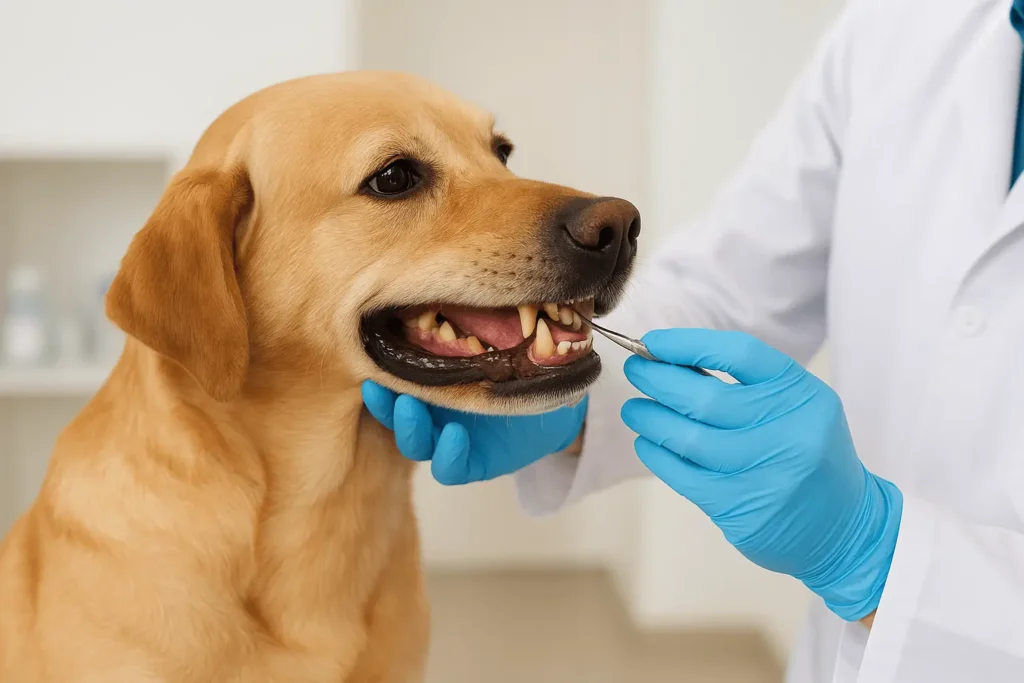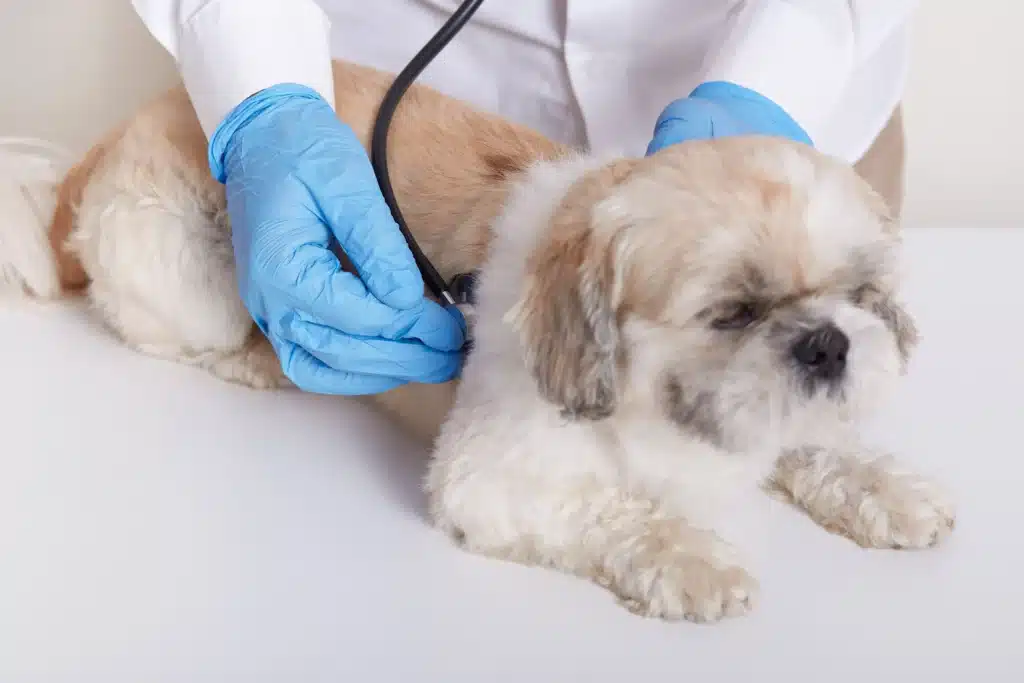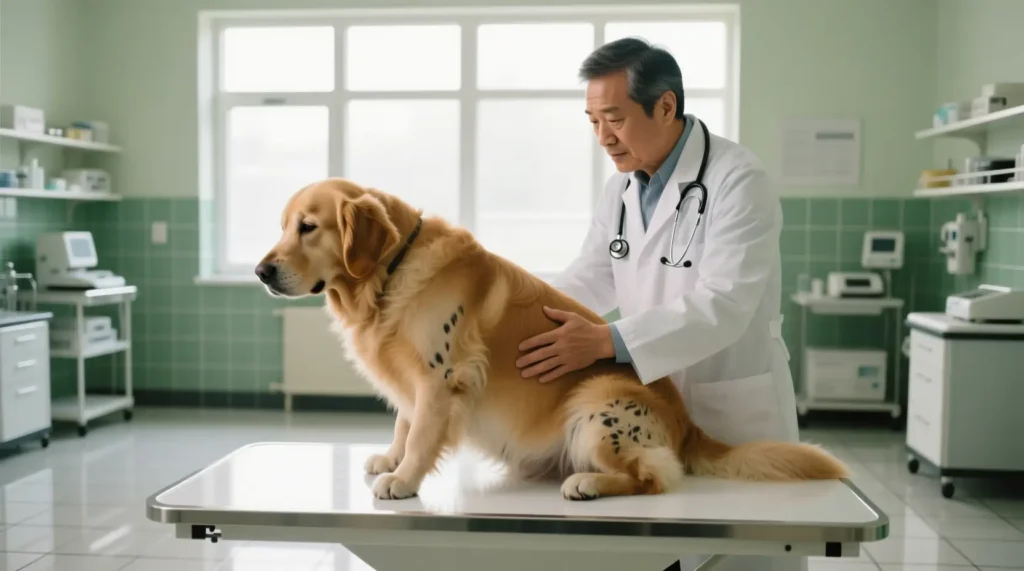Overview of Periodontal Disease and Its Importance
Periodontal disease (PD) in dogs is an inflammatory condition that impacts the periodontium: the tissues that surround and support the teeth (including the gums, periodontal ligament, and alveolar bone). The disease starts as gingivitis (inflammation and infection of the gums), and if left untreated, can advance to periodontitis (the loss of tissue attachment and bone).
It begins with the accumulation of dental calculus (a polymicrobial biofilm) that adheres to the tooth surface, which initiates an immune response in the host, destroying supporting tissues. PD is a primary concern for veterinarians in practice because while the local manifestations include calculus, pocketing, tooth mobility, and halitosis, there is now increasing evidence of systemic effects (e.g., cardiovascular, renal) in dogs.
Occurrence & Risk Factors
How frequent is it?
The prevalence of PD in dog populations that are anaesthetised and examined in detail varies in studies from 44% to 100%.
Another review in 2022 has stated, “PD is one of the most prevalent diseases in dogs over the age of three years with reported prevalence ranging from 80% to 89%.”
In a cross‐sectional study of 445 adult dogs in commercial breeding facilities, prevalence (Grades I-IV) was 86.3% (95% CI 82.9–89.3).
In primary‐care veterinary practices (visual assessment in conscious dogs), the reported prevalence was much less (9.3 – 18.2%), likely representing under‐diagnosis.
Therefore, almost all dogs will develop at least mild PD if untreated and advancing age will increase this likelihood.
Risk Factors
A summary of several key risk factors recently reported in the literature:
Age: Older dogs are at much higher risk. For example, in one study based in the UK, dogs aged ≥12 years were at ~3.9× the risk of dogs aged 2–4 years (Rvc.ac.uk, 2021).
Size/breed: Smaller and toy breeds are more at risk. Dogs <10 kg were at ~3× the risk of dogs weighing 30–40 kg (Rvc.ac.uk, 2021).
Breed predisposition: Some breeds, such as Toy Poodle, King Charles Spaniel, Cavalier King Charles, and Greyhound, are more at risk.
Body weight: Lower body weight tends to lead to a greater risk.
Genetic/anatomical factors: The thinner gingiva, malocclusion, and crowded dentition seen in small breeds predispose them to periodontal disease.
Poor home care & dental hygiene: The absence of regular tooth-brushing and professional cleaning will certainly cause progression.
Why the large variation in prevalence reports?
The variation in prevalence rates (9% vs 80%+) is explained simply by the method used: visual examination of conscious dogs normally misses disease; using careful examination of anaesthetised dogs usually finds much disease.
Clinical Indicators and Stages
Symptoms
Initially, changes may be subtle and not apparent until sufficient time has passed to allow for bony changes to exist with signs. Noted clinical signs of periodontal disease include the following:
- Halitosis (bad breath)
- Yellow-brown calculus (tartar) is visible at the gingival margin
- Gingival redness, swelling or bleeding
- Recession of the gingiva, periodontal pockets, gingival recession, exposed tooth roots
- Tooth mobility, drift, loss
- Discomfort or difficulty in eating
Stages of disease
Veterinary manuals have, in general, described stages of periodontal disease or PD as follows: 0-4
Stage 0: healthy tissues
A dog’s teeth are anchored to the jawbone by periodontal ligaments. As dental disease advances, these supporting tissues and bones begin to deteriorate, eventually leading to loose or lost teeth.
The stages of periodontal disease are determined by the extent of bone loss surrounding the teeth:
- Stage 1 – Gingivitis: Inflammation of the gums without any bone loss, visible as redness along the gumline.
- Stage 2 – Early Periodontal Disease: Up to 25% bone loss begins to occur.
- Stage 3 – Moderate Periodontal Disease: Bone loss ranges between 25% and 50%.
- Stage 4 – Advanced Periodontal Disease: More than 50% of the bone support is lost, often resulting in tooth mobility or loss.
Knowing the stage can direct treatment and aid in prognosis.
Systemic Effects and Quality of Life
- It is increasingly evident that periodontal disease in dogs is not merely a “tooth problem.” Here are some important points to note:
- A retrospective cohort study concluded that increased frequency of dental scaling was correlated with decreased mortality risk in dogs.
- In people, having severe periodontal disease is a known risk factor for cardiovascular disease; dogs aren’t specifically studied, but the relationships appear to be the same.
- Periodontal disease leads to tooth loss, chronic pain, reduced food intake, and diminished quality of life. Dog owners frequently underappreciate their dog’s dental pain, or they simply ignore early signs.
- These devices show considerable promise for detection at an earlier point and more informed decision-making.
Treatment & Prevention
Daily tooth-brushing remains the gold standard; however, a survey in 2023 found only ~42% of owners brushed daily, even after treatment for periodontitis.
Professional dental cleanings (scaling + polishing) under anaesthesia at intervals recommended by the veterinarian.
Suitable diets, dental chews, and home-care adjuncts help with plaque control.
Regular veterinary examinations, including an oral health assessment, especially important in high-risk breeds and older dogs.
Treatment
Depending on the stage of (Gingivitis / Periodontitis)
Stage 1 (gingivitis): Scale & polish + home care; excellent prognosis.
Stage 2-3: Professional cleaning under anaesthesia, root-planing, possibly local therapy (antibiotic, host-modulation) and very strict homecare.
Stage 4: Advanced periodontitis could require dental extractions, periodontal surgery, and maintenance with patient monitoring.
The Cost & commitment
Anaesthesia dental procedures are more expensive than simple examinations; however, committing to a case for prevention can save you money and give a better quality of life and longevity.
Practical Steps for Dog Owners
Here are some practical steps for dog owners to contribute to their dog’s periodontal health:
Evaluate your dog’s oral health: Is there yellow/brown tartar visible? Are the gums red or inflamed? Any persistently bad breath?
Start brushing: Make sure to either purchase or use a toothbrush or finger-brush designed for dogs with toothpaste that is flavoured for dogs.
Book dental health reviews: Book an appointment with your veterinarian to do dental exams. If you have a small/toy breed, and/or an older dog or a brachycephalic dog, it is even more important.
Use dental diet/chews: Talk to your vet about dental chews and diets to help limit the amount of plaque build-up on the teeth and gums.
Screen for advanced disease: Look for pets that drop food, don’t chew anymore, drool, have loose teeth, or have sudden bad breath if you see any of these, see your veterinarian.Be consistent with home-care: The greatest gap in prevention is consistency – some pet owners report stopping brushing their pets once they decide they won’t cooperate anymore (in one study, from a survey, 42% brushed daily) (Svärd and Enlund 2023).


